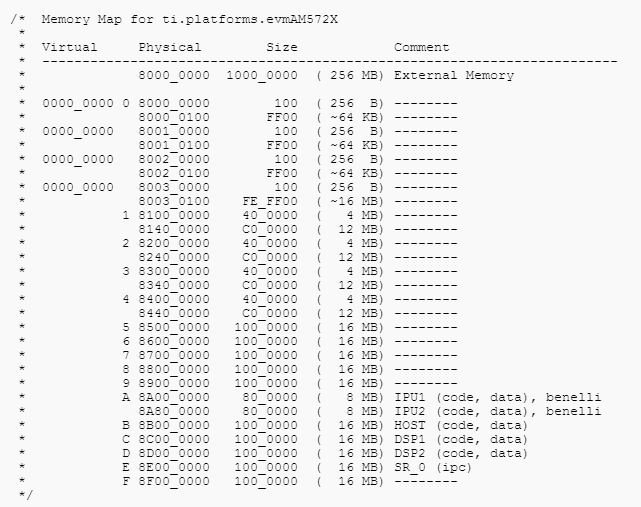This question is an evolution of a previous question I posted here: https://e2e.ti.com/support/embedded/tirtos/f/355/t/492719
We are designing a custom board based on the EVM AM5728 GP. We will have Linux on the ARMs and TI-RTOS on the DSP Cores.
The plan is to have the ARM control as much of the hardware as possible, but the DSP does need to access some of the interfaces. The DSP will need to access UART, SPI, GPIO, PCIE. DSP will be using memory mapped from the ARM via the MMU. It is anticipated that he ARM will handle all PINMUX config and setup clocks.
In looking at the board files for the evmAM572x for the C66, it seems like I can delete almost everything under the assumptions above.
Currently on the EVM AM5728 GP, I have been able to do testing with the following board init:
Board_initCfg boardCfg;
boardCfg = BOARD_INIT_UNLOCK_MMR
| BOARD_INIT_UART_STDIO
| BOARD_INIT_MODULE_CLOCK
| BOARD_INIT_PINMUX_CONFIG // The PINMUX config causes an 18 second delay in completing the Board_init() function. ;
Board_init(boardCfg);
Just short of starting with the evmAM572x board file and slowly stripping everything out one piece at a time until something breaks,
I was wondering if someone could comment on the idea that I might not need a board init at all. For example, the UART Init is
actually calling UART_stdioInit(BOARD_UART_INSTANCE); which I could call directly instead of calling Board_init().
Comments/Questions/Ideas?


